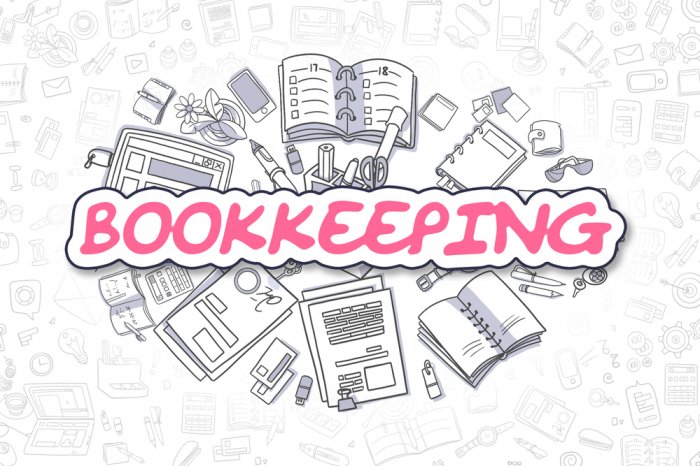Streamlining Your Bookkeeping: A Closer Look at the 4 Types of Financial Reports
If you’re a business owner, you understand the importance of staying on top of your finances. Keeping accurate and up-to-date financial records is essential for making informed business decisions and ensuring the long-term success of your company. That’s where a skilled bookkeeper comes in to streamline your bookkeeping process and provide you with the necessary financial reports to help you understand your business’s performance. In this blog post, we will take a closer look at the four main types of financial reports that your bookkeeper can generate to give you a clear picture of your business’s financial health.
The Income Statement – Revealing Your Business Performance
The heart of your business’s story lies within its income statement. Picture it as the narrative that records the ebb and flow of your financial triumphs and challenges over time. This pivotal document, crafted meticulously by your bookkeeper, chronicles the journey of your revenues and expenses, casting light on the paths tread over the course of a month, quarter, or year. It’s in the detailed examination of this statement where you’ll uncover the rhythm of your business operations, manifested through the funds that enter and leave your enterprise.
Understanding the income statement is akin to mastering the art of financial storytelling. Each line item whispers tales of success, caution, or ambition, revealing not just the numerical outcomes, but the underlying decisions and strategies that propelled those figures. It’s a report that invites you to dive deeper, to question not merely how much money your business made, but how those profits were secured and at what cost.
This financial chronicle holds the keys to untangling the complexities of profitability. It guides you through a meticulous breakdown of your business’s operational efficiencies, or lack thereof, allowing you to pinpoint precisely where your resources are being allocated most effectively and where there is room for enhancement. Whether it’s a surge in sales or an uptick in expenses, the income statement provides you with the insights to navigate these financial waves with confidence.
By engaging in this level of analysis, you’re not just reviewing numbers; you’re strategizing. You’re identifying opportunities to refine your business model, to optimize your spending, and to amplify your revenue streams. This isn’t about mere cost-cutting; it’s about crafting a roadmap for sustainable growth and resilience.
Thus, the income statement transcends its role as a mere financial report. It becomes a beacon, illuminating your business’s performance in the stark light of reality, and offering the clarity needed to chart a course towards continued prosperity. With your bookkeeper’s expertise, this document transforms into an invaluable tool for reflection, decision-making, and ultimately, financial success.
The Balance Sheet – A Snapshot of Your Financial Health
In the realm of financial navigation, the balance sheet serves as an indispensable compass. This essential document, meticulously prepared by your bookkeeper, captures the essence of your business’s financial wellbeing at a distinct moment in time. It lays out a clear and comprehensive view of your assets, liabilities, and equity, forming a foundational understanding of your enterprise’s fiscal robustness.
Delving into the assets section, you’re presented with a detailed account of what your business owns—these range from the tangible (like buildings and inventory) to the intangible (such as patents and trademarks). Each asset listed is a vital piece of your business’s financial puzzle, representing resources at your disposal to generate income and fuel growth.
Switching focus to liabilities, this portion of the balance sheet articulates what your business owes. Whether it’s loans, mortgages, or accounts payable, understanding your liabilities is crucial. It paints a picture of your financial obligations and the timelines for meeting them, offering insights into the company’s debt management and its implications on cash flow and investment capabilities.
Equity, the balance sheet’s final component, marks the residual interest in your assets after deducting liabilities. It’s a reflection of the owner’s stake in the business, capturing the essence of what has been invested and retained within the company over time. This section unravels the story of your business’s financial journey, depicting how past decisions, profits, and losses have culminated to shape the present financial landscape.
The balance sheet, in its entirety, is more than a static financial snapshot; it’s a dynamic indicator of your business’s fiscal health and operational viability. It beckons you to examine the delicate interplay between what you own, owe, and the equity that binds these elements together. Through its lens, you’re able to gauge liquidity, assess solvency, and evaluate the overall financial stability of your enterprise.
By offering a bird’s-eye view of your company’s financial standing, the balance sheet empowers you with the knowledge to make informed strategic decisions. It illuminates potential areas for improvement in managing resources, optimizing asset utilization, and structuring liabilities, ensuring that every move you make is one step closer to financial equilibrium and growth. In the hands of a proficient bookkeeper, the balance sheet transcends its role as a mere financial statement, becoming a pivotal tool in the quest for sustainable business success.
The Statement of Cash Flows – Understanding Cash Movement
Embarking on the exploration of the statement of cash flows, we delve into a vital narrative that unravels the journey of cash as it traverses through your business landscape. This pivotal financial report, thoughtfully prepared by your bookkeeper, illuminates the path that cash takes, flowing in and out of your enterprise within a specified timeframe. It segments cash movements into three primary activities: operating, investing, and financing, each narrating a unique aspect of your business’s cash story.
In the realm of operating activities, we uncover the pulse of your business’s daily functions. Here, cash inflows and outflows are laid bare, revealing the direct consequences of your operational strategies. This segment answers pivotal questions about the cash generated from your core business operations, providing insights into whether your day-to-day activities are fueling your business’s growth or merely keeping it afloat.
Transitioning to investing activities, the focus shifts to how cash is utilized in the acquisition and disposal of long-term assets. This section sheds light on your business’s investment in its future, capturing the outflow of cash for new equipment, property, or investments in other companies. It’s a testament to how your business reinvests its earnings to ensure long-term prosperity and stability.
Lastly, the financing activities section offers a window into how your business interacts with its funders and shareholders. It details the inflow of cash from loans, the issuance of shares, or the outflow of cash used to repay debts and distribute dividends. This part of the report is crucial for understanding how your business finances its operations and growth, and how these decisions impact cash reserves.
The statement of cash flows stands as an indispensable guide in comprehending your business’s liquidity and financial flexibility. By meticulously examining this report, you can gauge the effectiveness of your financial strategies, identify potential cash flow challenges before they escalate, and make informed decisions that safeguard your business’s financial health. It not only offers a transparent view of your cash position but also equips you with the knowledge to navigate the financial ebbs and flows, ensuring your business remains on a trajectory of growth and stability. Through the expert preparation by your bookkeeper, this document becomes an essential component in mastering the financial dynamics of your enterprise.
The Statement of Changes in Equity – Tracking Ownership Changes
Venturing into the realms of the statement of changes in equity invites you to a nuanced understanding of the shifts within your business’s backbone—its equity. Masterfully prepared by your bookkeeper, this report serves as a ledger, chronicling the ebb and flow of your company’s equity over time. Herein lies a narrative of transformation, detailing how transactions and operational decisions have sculpted the landscape of ownership and investment in your enterprise.
This financial canvas paints a vivid picture of the interplay between generated net income and its reinvestment or distribution among shareholders through dividends. It’s a testament to the dynamics of your business’s growth strategy and fiscal health, illustrating the direct impact of profit allocation on the equity structure. Observing these changes offers a lens through which the strategic shifts in ownership and the infusion of capital can be viewed, providing a clear depiction of how these factors contribute to strengthening the foundation of your business.
Beyond the mere fluctuations in numerical values, the statement of changes in equity embodies the strategic decisions made at the helm of the company. It encapsulates the wisdom behind reinvesting profits back into the business versus rewarding shareholders, laying bare the strategic considerations that drive the balance between fostering growth and acknowledging the contributions of those invested in the company’s success.
This report, thus, does more than just recount the changes in equity; it reveals the rationale and outcomes of strategic decisions, offering insights into the sustainability and growth potential of your business. Through the meticulous preparation by your bookkeeper, the statement of changes in equity emerges as an essential guide, enabling you to navigate the complexities of ownership and investment. It provides a framework for understanding how each decision impacts your financial standing and equips you with the foresight needed to steer your business toward financial resilience and prosperity.
For more information, please visit Cents Savvy Small Business Accounting

